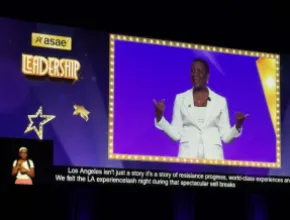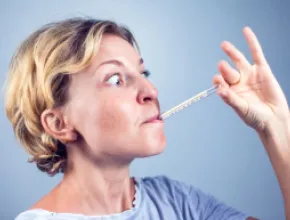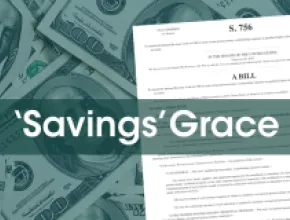The association meeting is dead. Long live the association meeting!
The annual meeting is the lifeblood of most associations, providing a critical source of sponsorship and exhibit revenue and opportunities to gather the troops to discuss important topics, map out organizational strategies, attract new members and leadership, and provide networking and educational opportunities that are also the professional lifeblood of participants.
But the traditional annual meeting model, many believe, has seen its day, as a new generation of time- and attention-challenged attendees demand more peer-to-peer engagement and program content that is immediately applicable to their specific work roles.
“One of the big things that may surprise people is in general, we’re seeing a decline in how many people are showing up in general sessions and concurrents, and the longer the conference goes, the worse,” said Dave Lutz, managing director for Velvet Chainsaw Consulting, a research and consulting company that works with major organizations on the format and content of their meetings. “People vote with their feet first and their wallets second. There’s a lot more people choosing not to attend, and even though they’re there, they’re not going in and sitting in a seat for 45 minutes or an hour in a general session.
“There is a huge leading indicator in our mind that the experience needs to change,” he continued. “We need to get them back in there and make it more valuable for them to choose from. Almost every association knows they want to do more interactive sessions, but it’s easier said than done.”
In short, it’s all about engagement, whether it be between member participants or with suppliers and exhibitors, whose revenue through sponsorships and tradeshow presence is an indispensable asset. But even the very word tradeshow can carry with it negative connotations to attendees, who, rightly or wrongly, are wary of feeling like the proverbial piece of red meat on a floor filled with lions.
An early adopter in massively reformatting her annual conference is Michelle Mason, president and CEO of Association Forum, a Chicago-based association that has been described as similar to a large chapter of ASAE, but is independent from the Washington, D.C.-based association of association executives.
“Our objective was to blow up the meeting format, to try something new and different and create a more engaging experience where our members can have a higher level of learning,” said Mason, who is entering into the fourth year of reimagining its annual meeting, Forum Forward. “We moved away from the traditional annual meeting format to a more engaging, learning experience for attendees. Our goal is to make sure we push the envelope for our members in designing learning experiences that our members can replicate in their environments.”
Although Forum Forward—which quite appropriately carried the theme “Construct. Deconstruct. Reconstruct.” for its June 28 annual meeting—is only a one-day event with a cap of 300 attendees, it serves as a learning lab of sorts for its association planner and supplier members.
“People are looking for what the next thing is, so we certainly want to be able to respond,” Mason said. “Forum Forward is more of a learning lab, where we can experiment and take risks. The core is a sense of community, so people can actually look across the room and see someone they want to make a connection with. It’s very experiential and hands-on, and the design seems to be working for us.”
The meeting has no exhibits, but instead offers a sponsors lounge with sofas, branded pillows, loveseats, chairs and tables, so sponsors can sit down and have a conversation with their clients and prospects rather than “sell them” in a more traditional exhibit environment. Mason said Association Forum does offer another event with an exhibit floor, but they have even shaken that up, moving from a linear format to a chevron configuration, with attendee engagement experiences available on the floor, such as a Digital Depot featuring virtual reality, and entertainment.
Mason’s advice to planners is not to be afraid to take risks and not to put up barriers between attendees, but instead create conversation opportunities between all delegates.
“People are looking for change and new experiences,” Mason said. “Look to enhance the event and meeting, but most importantly, focus on the community aspect of it, the human element and networking in addition to the education. Don’t move too far from the core of what your meeting is about, and in some cases, change can be iterative. You can test and learn.
Everything’s in beta. You can learn and grow over time.”
PageBreak
Joy Davis, director of knowledge management for the American Association of Pharmaceutical Scientists (AAPS), is another advocate of demolishing the traditional association meeting.
“We blew it up,” Davis said of the format of her association’s Annual Meeting and Exposition, which will be held Nov. 12-15 at the San Diego Convention Center and is expected to attract up to 8,000 attendees.
While the association is implementing changes to its 2017 meeting, an even more massive retooling is in motion for the 2018 conference.
“The meeting is 30 years old and it needed a pretty thorough evaluation,” Davis said. “We reevaluated the content that was presented, how it was being presented, the entire structure of the scientific content and the overall program content.”
The major challenge with the AAPS annual meeting is that its members represent a wide swath of the industry, from researchers to pharmaceutical product developers and companies, academics, industrial scientists and representatives from the bio-tech segment, with a mix of experience ranging from young professionals just entering the industry to more-seasoned scientists and professionals. A highlight of the meeting is the presentation of scientific papers, the format for which was mired in techniques mastered in the last century.
“We usually have 2,000 to 2,500 scientific papers presented,” Davis said of the previous format. “We have posters put on bulletin boards in different sections, and you unroll [the papers] and stick the paper up with thumbtacks on a giant board and stand there for three hours and hope someone will talk to you.”
This lack of engagement is the major hurdle the association has to clear. Its attendees crave relevance, and glittering generalities just don’t serve such a broad-based attendee profile.
“The development of a drug can take 15 or 20 steps, and there’s a scientist at each step” Davis said. “You need to find those people to mix with and talk about the things you care about.”
Davis’ colleague, Grace Jones, director of the meeting department at the AAPS, concurs.
“They’re trying to find the programming that they need to answer specific scientific questions,” Jones said. “If a scientist is figuring out how to deliver a medication to a patient, she wants to talk to the scientists about what happens afterward, or a scientist that is figuring out a formulation, or how does she get it to target a specific part of the body.”
To facilitate this purpose, the AAPS is changing its topic area to five different tracks that will be repeated from year to year, with the tracks correlating to drug research and development timelines. There will also be two “Topics of the Day,” so all of the attendees can have common ground to stand on. The association has also decided to keep keynote presentations and plenary sessions in the programming in order to address topics of general importance.
The old format started with a basic session—a “Topic 101” type of presentation—which then migrated to a didactic symposia lecture and then a dialogue/debate section. The new meeting will start the day with a short prologue by track, identifying a question the attendees will address each day, and then move on to a symposia in order to satisfy the exchange of scientific information. Each day will also feature an hour-long keynote provided by a scientist.
The new format will feature rapid-fire sessions, with each speaker having 10 minutes to present new research that has never been discussed at the meeting. This “looser” format allows attendees to flow in and out of sessions. The association is also shortening the meeting by a day, starting with its 2017 event.
“You make this plan for a big, bold meeting,” Davis said of the radical changes to the format. “It’s going to be amazing, but there are 20 million things that have to be changed, such as you can’t have a committee meeting because you need to have the scientists at the sessions. We used to have a lot of meetings that had nothing to do with the [conference], and if affects the meeting.”
Davis said as key members of the association rise through the hierarchy, members can get to a point of not being able to attend any of the sessions, which is critically important to scientists.
Elephant in the Room
Perhaps the earlier red-meat-meets-lions scenario is the wrong exhibit floor analogy, however, as the topic of tradeshows is really the “elephant in the room” many association organizers haven’t wanted to talk about until recently. Still, the original holds true on the attendee side.
“If I’m a buyer, I don’t want to walk the exhibit floor and feel like a piece of red meat,” said Velvet Chainsaw Consulting’s Lutz. “I want the vendors to help me and I’ll think of them when it’s time for me to buy or recommend them. A lot of companies have that mindset, but they have to display that more on the exhibit floor. If associations are not able to evolve more into a solutions center or learning concept, the prospect is that the revenue they’ll get from exhibits will be on the decline.”
Velvet Chainsaw client AAPS, which is putting an emphasis on having learning areas and micro meetings on the show floor, now provides a mixed-use environment where attendees can engage in educational and networking opportunities with peers from both sides of the buyer-supplier equation.
When AAPS began reimagining its annual meeting, one of the key changes was to the exhibit floor component.
“We treat people like walking wallets, and the only purpose is to suck money out of them,” said the AAPS’ Jones about the traditional association exhibit floor attitude. “We make a mistake by trapping them in an exhibit hall and forcing them to sit in a booth for hours on end. We need to find a way to get those folks to blend in, with more opportunities for them to show and more opportunities [for attendees] to learn.”
AAPS started retooling the exhibit programming at its annual event last year by including more content delivery opportunities in the exhibit hall and redesigning it into a research center.
“You start by figuring out who your meeting is for, and then you adjust your program,” said Davis about the overarching strategy. “The exhibit hall is now called The Solution Center, and we give exhibitors the opportunity to be thought leaders rather than coming here to sell something and sit in a booth.”
Features of The Solution Center include “chalk talks,” a very popular piece of programming in which expert sponsors and exhibitors can explain specific issues to an audience of up to 40 attendees.
“They were not to come in and pitch,” Davis clarified. “They were to come in and explain something scientists wanted to know.”
This type of programming will be offered every day in The Solution Center, Davis added.
One of the final pieces of the puzzle, which will be tacked for its 2018 annual meeting in Washington, D.C., is to tackle the format of its awards component.
“We have to plan how that’s going to fit into the program,” Jones said. “It has to be part of a 360-degree vision and not just something we do on stage at the beginning of the meeting.”
According to Davis and Jones, collecting attendee data and using that to get leadership buy-in is critical to any reformatting process. One of the major reasons AAPS hired Velvet
Chainsaw Consulting, a company that prides itself on data analysis as the key component of its consulting work, was to get a handle on the numbers.
“Look at all of your data, including the number of people who have attended your meeting in the past and the number of people who may come one year and never come back,” Jones said. “Survey people to ask what type of networking they prefer. Do they want giant parities with everyone and their brother, or something more intimate? And don’t wait until you see five years of data.”
In the end, a radical retooling of the annual meeting is never a walk in the park when it comes to organizational buy-in, but doing one’s homework and collecting lots of data from the attendee base will result in decision makers realizing that changes need to be made.
“There’s some weariness,” Jones said of concerns voiced by AAPS leadership. “We hear from people who are very concerned, but last year when we started cutting out the committee meetings, one member said, ‘Look at all the time I have to go to education sessions—this is wonderful!’ It does help that we did seek a well-respected group of members on the committee and let them really grapple with the issues, so when they go out and talk to people they believe what they’re saying.” Davis echoed Jones’ comments.
“You have to show them the data,” she said. “This helps them see the whole game board, and then involve them in solving the problem—that’s where you get the buy-in.”







